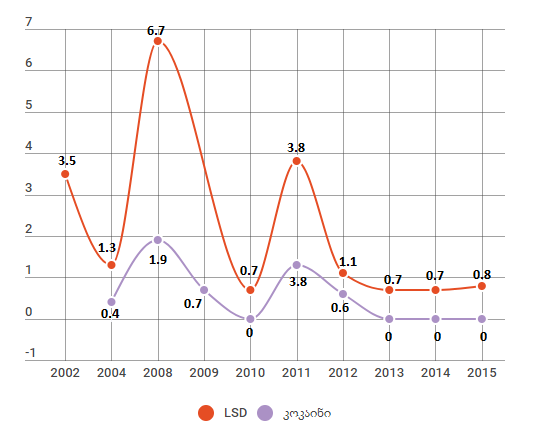Resume:
As of 2017, a total of 736,500 persons were employed in agriculture which constitutes 43.2% of the country’s total employees. The figure for 2003-2017 was 48.4% on average although the number of those employed in agriculture has been clearly dropping since 2017 which is a positive trend itself.
Of those employed in the agriculture sector, the share of self-employed (as of 2016 it is 47.7%) is high and the majority of them are people employed in domestic households. The majority of their produce is self-consumed. The efficiency/productivity of these people is usually poor.As a result, even though almost half of employed people in Georgia are working in agriculture, the share of agriculture in the country’s gross domestic product (GDP) is less than 10% which indicates the inefficiency of the employment and its low productivity. The latter automatically means a lack of income which is duly reflected upon the standard of living. For more clarity, 43.2% of the total amount of employed people created only 8.2% of the total value produced in Georgia in 2017.
In parallel with the sizable segment of self-employed persons in agriculture (inefficient employment), labour remuneration in the sector is also low. The average monthly nominal salary in the agriculture sector is 30%-40% lower as compared to the average figure in Georgia’s economy (all sectors).
Analysis The candidate for Prime Minister of Georgia, Mamuka Bakhtadze, in his speech before the Parliament stated
that 50% of Georgia’s population is employed in agriculture which causes poverty.
FactChecktook interest in the accuracy of the statement.
In accordance with the data of the National Statistics Office of Georgia, a total of 736,500 people were employed in the agriculture sector as of 2017 which constitutes 43.2% of the total number of employed persons. The World Bank publishes the same figure on the basis of the World Labour Organization’s (ILO) data. In this case, the share of those employed in agriculture constitutes 40.9% of the total number of employed persons in Georgia. The trend of changes for employment in the agriculture sector based on ILO data is given in Graph 1. In the course of the last years, this figure shows a constant decrease which is a positive trend. In the last ten years, the decrease constituted 12.5 percentage points.
Graph 1:
Share of Those Employed in Agriculture from Total Employment
 Source: World Bank, International Labour Organization
Source: World Bank, International Labour Organization
In regard to productivity, even though almost half of those employed work in the agriculture sector, the share of agriculture in Georgia’s GDP is less than 10% which indicates the inefficiency of work in this sector and its low productivity. The latter automatically means a lack of income which is respectively reflected upon the standard of living. For more clarity, 43.2% of the total number of employed persons created only 8.2% of the total value produced in Georgia in 2017.
At the same time, an increase in the share of agriculture in the total GDP is not a desirable goal itself. On the contrary, in light of economic development and the rapid advancement of more competitive sectors, it is expected that the share of agriculture will decline substantially. This is because, all things being equal, the share of agriculture in a country’s GDP is much lower in developed economies and is higher in less developed nations.Therefore, in the case of Georgia, it is not a low share of agriculture in the GDP which is a problem but the surplus workforce employed in agriculture to achieve this result.
The share of self-employed persons in agriculture is high (as of 2016 it is 47.7%) with the majority of persons employed in their own domestic households and with the majority of their produce for self-consumption. Usually, the efficiency/productivity of these people is poor. In accordance with the World Bank’s research,the “success” of self-employed persons in the agriculture sector in developing countries (Georgia belongs to this category) is assessed on the basis of two indicators: 1) Whether the self-employed are employers and 2) Whether the worker lives in a household with per capita consumption above the $2/day poverty line. In accordance with these criteria, only 5% of persons self-employed in agriculture in developing countries uses hired labour whilst only 23% passes the minimum consumption threshold.
Graph 2:
Average Monthly Nominal Salary of Hired Labour
 Source: National Statistics Office of Georgia
Source: National Statistics Office of Georgia
In parallel to the sizable share of persons self-employed (inefficient employment) in agriculture, the labour remuneration is also low. As illustrated by the graph, the average monthly nominal salary for hired labour in agriculture is substantially (30%-40%) lower as compared to the average figure in the whole economy (all sectors).









